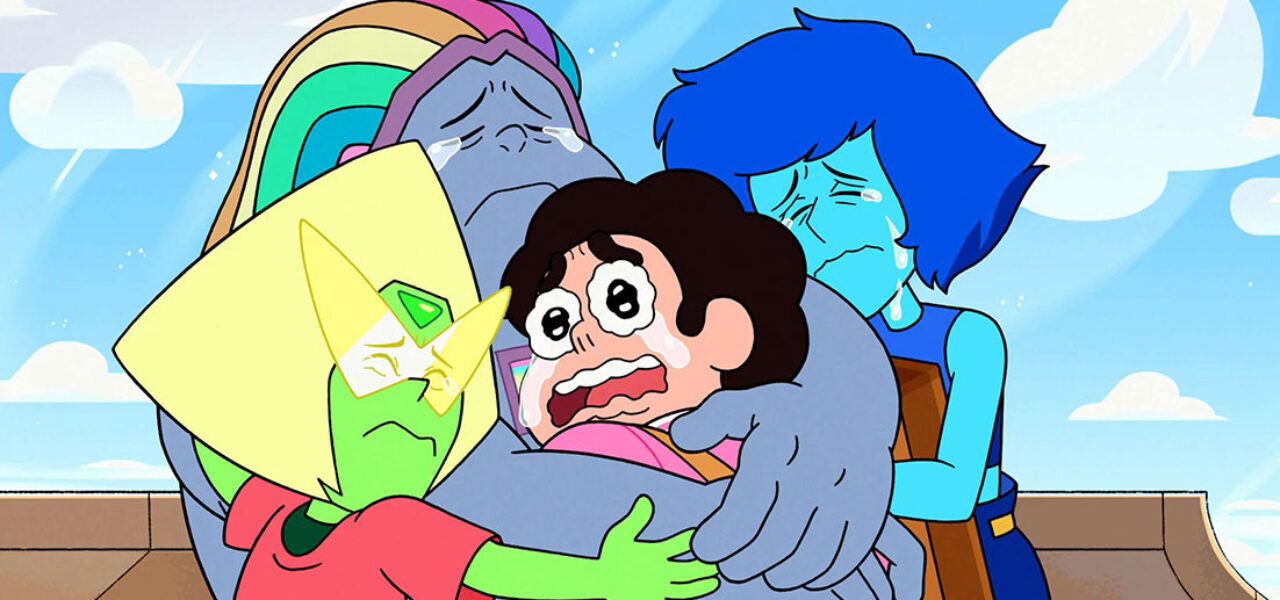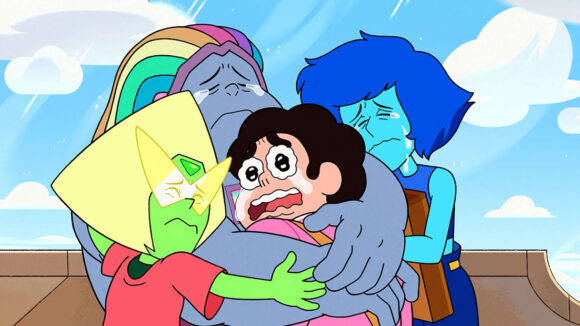

Cartoon Network Told Rebecca Sugar Not To Speak Publicly About Queer Themes In ‘Steven Universe’
Steven Universe, which wrapped up earlier this year, was a watershed series, presenting nonbinary identities and lesbian love with a forthrightness unheard of in mainstream tv animation. Its influence was bolstered the public profile of creator Rebecca Sugar, a bisexual nonbinary woman who has spoken openly about the themes she was addressing and the ways she coded them in the show.
To begin with, Cartoon Network, the series’s producer, didn’t want any of this. As Sugar revealed to the magazine Paper, studio executives attempted to halt the depiction of gay love. When they eventually relented, they still tried, for some years, to stop Sugar talking about this aspect of the show in public.
By 2014, Sugar says, the executives understood that the characters of Ruby and Sapphire (pictured at top) represent a lesbian couple. “They told us point-blank, ‘you can’t have these characters be in a romantic relationship.'” But Sugar adds that the characters were too entrenched, the production too far along, for this to be changed.
Instead, she was told that she “couldn’t discuss [this relationship] publicly,” otherwise “the show will be pulled from a lot of countries and that may mean the end of the show.” The studio back-pedaled around 2015 or 2016, by which point Sugar “was honestly really mentally ill.” She then came out as bisexual and linked this fact to the show’s themes.
The success of Steven Universe has drawn the industry’s attention to the subject of LGBTQ+ representation and paved the way for other shows that embrace queer positivity. One of them is She-Ra and the Princesses of Power, produced by Dreamworks Animation for Netflix, whose creator Noelle Stevenson was interviewed alongside Sugar for Paper.
Stevenson’s experiences echo Sugar’s. “At first it seemed like we were going to get [support for queer characters] from the company,” she says. “Then the election in 2016 happened and everybody got really scared … We were told point-blank we would not be able to do this.”
Both showrunners credit fans with picking up on the coded queer relationships and celebrating them, emboldening executives to change their minds and lend their support. As Stevenson says, “It felt like with that last season we were able to be open and clear about what we were doing whereas in past seasons we had to obscure it with other language.”
In a wide-ranging conversation, the pair touch on various issues surrounding queer representation in animation: the progress made in recent years, the risk of complacency, the constant threat of backlash, and the influence of the comics world. Tellingly, they are speaking after their respective shows have ended (She-Ra’s final season launched in May). Progress may be happening, but conditions for queer storytellers in the industry remain far from ideal.

.png)